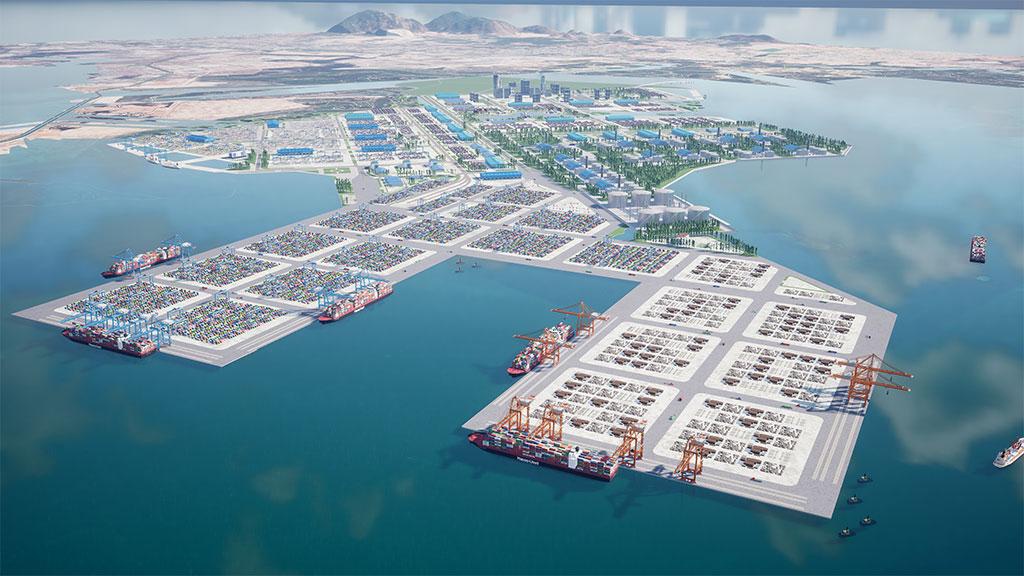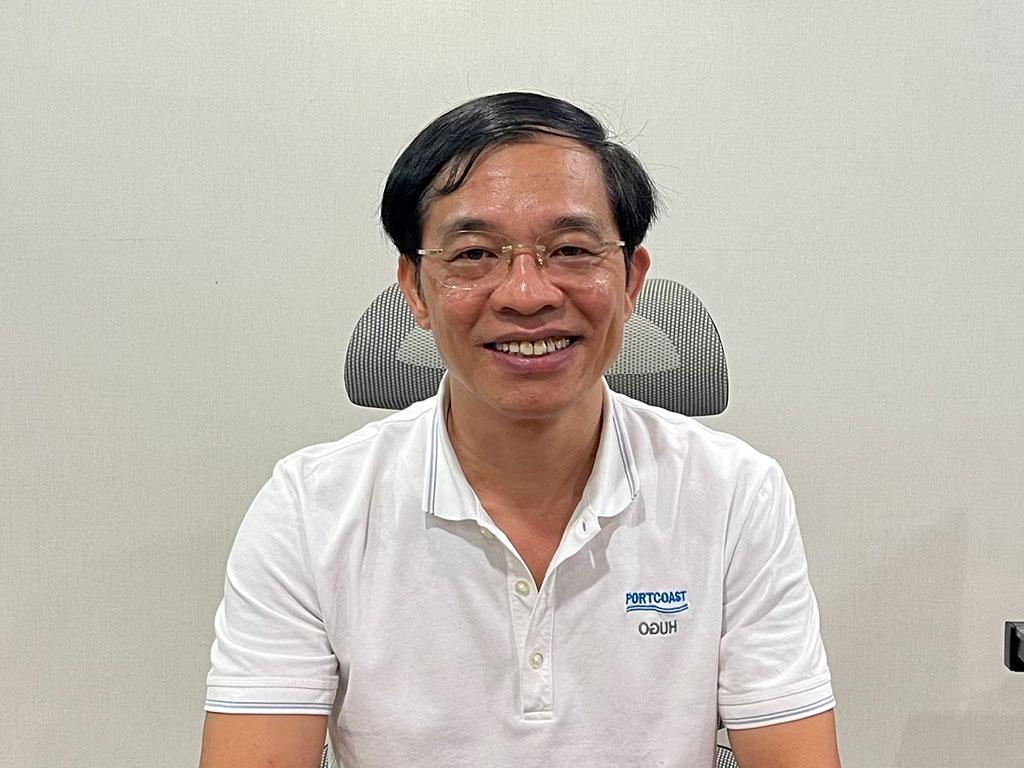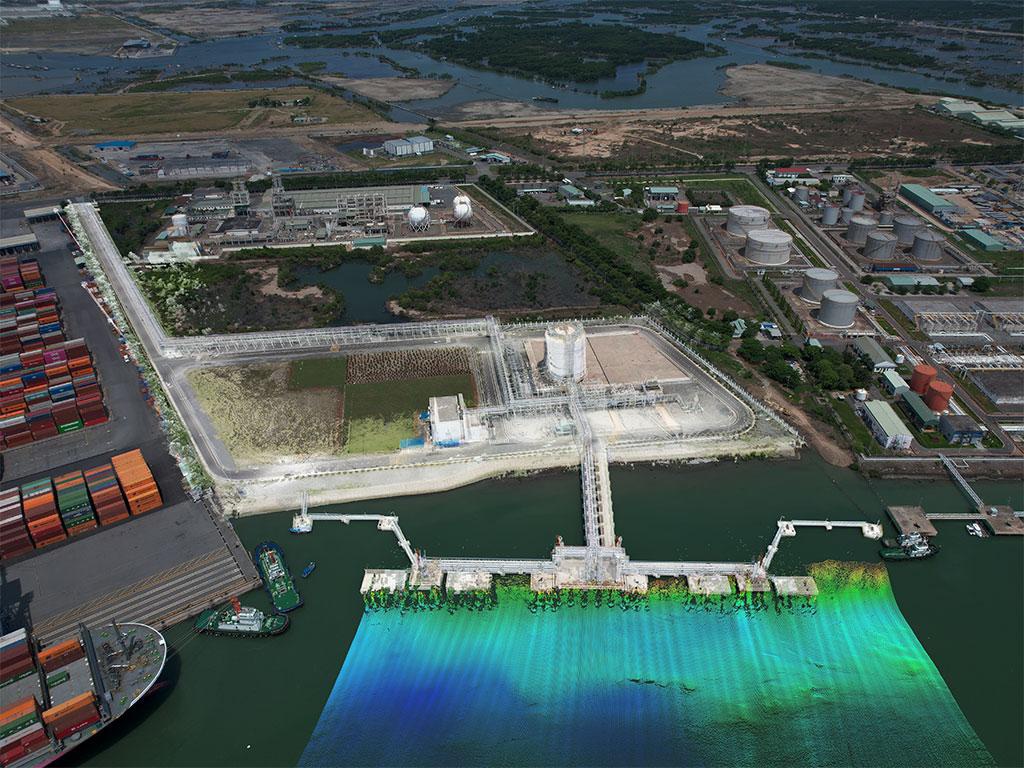(84 - 28) 62970345
Digitalization of infrastructure - The foundation for the development of seaports and smart cities
Portcoast Consultant Corporation (Portcoast) has applied modern technology in digitalizing seaport infrastructure and is currently researching its application in urban infrastructure.
Thanh Nien conducted an interview with Mr. Pham Anh Tuan, General Director of Portcoast, about these breakthrough applications.
"Sir, why did Portcoast decide to invest in human resources, machinery, and equipment to apply modern technology to many ports, port clusters, and urban infrastructure projects?"

Today, we often hear about Industry 4.0, the digital age, or digital transformation. It's not just about communication, camera systems, or documents being converted to electronic form, but all areas and activities in life can integrate digital technology.
As a leading consultancy in the port and maritime construction industry, Portcoast understands the need to apply the achievements of Industry 4.0 to quickly achieve the goal of digitalizing seaport infrastructure and moving towards building smart ports, which is an inevitable development trend.
For Vietnam, the government has set out strategies to make our country a strong maritime nation, including the task of developing the seaport system. Therefore, applying scientific and technological achievements to the seaport system that is suitable for the new development stage is the shortest path for the Vietnamese seaport system to develop in parallel with the world's leading seaport countries.

How has Portcoast applied digital technology in Vietnam?
Portcoast has made significant progress in digital transformation and research on digital technical copies. Readers can refer to the website https://www.portcoast.com.vn for more information.
In recent years, despite the explosive growth of Building Information Modeling (BIM) due to its many benefits, especially its application in creating Digital Twins, the technology has been slow to develop and faces many challenges in the Vietnamese maritime industry. Understanding the benefits, Portcoast has invested heavily in and researched BIM and Scan-to-BIM technologies, digitizing many ports towards the goal of consulting and developing Digital Twins for the maritime industry.
In the past 2 years, Portcoast has digitized and researched the implementation of Digital Twins for many ports and port clusters in Vietnam and abroad, notably the Cai Mep - Thi Vai port cluster. The unique feature of the port is that it includes both onshore and underwater structures. Therefore, Portcoast uses both digital equipment for onshore and underwater structures.
For the onshore area, we use 3D laser scanning devices placed on fixed stations (Terrestrial Laser Scanning) and on vehicles (Mobile mapping) integrated with GPS positioning system for simultaneous movement and scanning. Furthermore, another technology integrates 3D laser scanners and unmanned aerial vehicles (UAVs) to scan data in large areas. The two devices that Portcoast uses come from famous brands such as Stormbee integrated with Faro S350-A scanner and DJI Matrice 300 RTK integrated with Zenmuse L1 module.
For the underwater area, Portcoast uses a mobile mapping solution on an unmanned surface vehicle (USV). The devices mounted on the USV include a 3D laser scanner (NORBIT iLidar) placed on the bow of the ship to record surrounding data, and a device mounted on the bottom of the ship (NORBIT iWBMS) to scan the seabed topography and riverbed.
With the application of current technology and equipment, Portcoast can create an accurate digital model of a port or port system with complete information, like a twin sibling to the actual construction, serving management and operation.

Is it because of Portcoast's technological and experiential potential in implementing digital projects that they continue to advance and research the application of these modern technology processes to urban infrastructure?
That's right. Imagine we have a small-scale map of the entire city, we can already have an overview of the urban space development plan to consider development directions. So now we have a digital model at a 1:1 scale, representing the entire above and underground infrastructure with full information, what can we do? This digital model of the entire city not only allows us to study urban development planning, clearly see the underground technical infrastructure system, and related information on management, maintenance, and repairs but also allows us to reproduce what is happening in the city, establish scenarios simulating all activities in the city such as traffic activities, potential incidents that may occur... to build response scenarios and move towards comprehensive city management systems.
Therefore, to have a smart city, we need to build a digital model, which can start from a neighborhood, an area, and then move on to the entire city. Ho Chi Minh City was chosen by Portcoast as the city to implement the pilot project, using modern equipment as mentioned above to scan data of cultural heritage or iconic architecture such as the Municipal Theatre, Independence Palace, City Hall, Bitexco, Vietcombank Tower... or to scan data of streets and sidewalks on both sides.
Currently, some specific projects such as the City Theater and the surrounding roads, and the Vietcombank Tower have been digitally modeled by us. We hope to soon deploy mobile mapping applications to scan data for streets.
Currently, some specific projects such as the City Theater and the surrounding roads, and the Vietcombank Tower have been digitally modeled by us. We hope to soon deploy mobile mapping applications to scan data for streets. Therefore, Portcoast owns a comprehensive and ready-made solution for large-scale projects. What is Portcoast's goal for the future?
With significant developments and notable achievements in the past, Portcoast is aiming for even more ambitious goals in the future. Specifically, Portcoast aims to complete the digitization of the entire Thi Vai-Cai Mep port system in 2021.
In addition, a complete and modern solution system has been developed for the purpose of collecting data to serve the urban infrastructure digitization process in Vietnam. In terms of modernity, this system is currently on par with the world and ready for the urban digitization process. Specifically, Portcoast aims to complete the digitization of some areas in Ho Chi Minh City.
For example, in the case of Covid-19 prevention and control, assuming we have a complete digital model of the entire city, combined with an AI identification system and real-time data, we can manage traffic flows to limit overcrowding in a specific location or area on a virtual 1:1 scale.
Portcoast Digital Transformation Center
We provide digital conversion services in the construction industry. We research ways to apply digital conversion to the world of design and construction, creating a digital platform to optimize design, promote industrial construction processes, and use digital models.
Contact Us
328 Nguyen Trong Tuyen Str., Ward 2, Tan Binh Dist. , Ho Chi Minh City
(84 - 28) 62970345; 62970341
portcoast@portcoast.com.vn